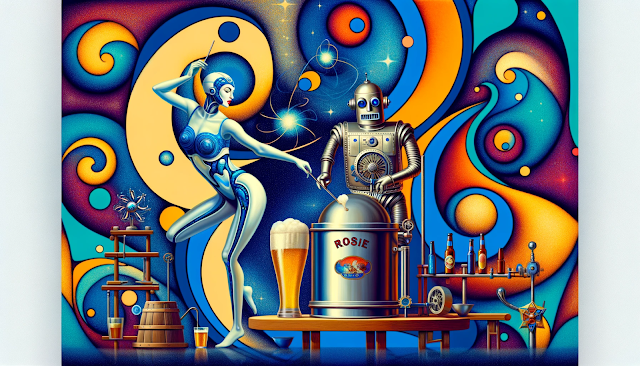Unlike commercially produced beers, home-brewed beer is not pasteurized, meaning that it can quickly deteriorate in quality if not stored correctly.
This can lead to a loss of flavor, aroma, and carbonation, making the beer unappealing to drink.
One factor that affects the shelf life of home-brewed beer is the packaging.
Bottled beers tend to have a longer shelf life than kegged beers due to the airtight seal provided by the bottle's cap.
However, bottled beers are also more susceptible to light exposure, which can quickly spoil the beer so keep them out of the light when conditioning your beer.
On the other hand, kegged beers have a shorter shelf life due to the continuous exposure to air and the lack of a tight seal. However, kegged beers are easier to dispense and serve, making them a popular choice for home-brewers.
That's not all you need to think about.
Certain styles of beer tend to have a longer shelf life than others
For example, the shelf life of a Pilsner with added hops and bottled tightly with a cap will depend on various factors, such as the alcohol content, storage conditions, and the freshness of the hops used in brewing. Generally speaking, Pilsners with a moderate alcohol content (around 5% ABV) can be expected to last for several months to a year if stored properly in cool (ideally between 45-55°F), dark conditions and away from direct sunlight, which can cause skunked beer.Skunked is such a cool word!
A stout or porter on the other hand may be able stay on the shelf a lot longer.
Stouts and Porters with a high alcohol by volume (ABV) and well-hopped are generally considered to have a longer shelf life than those with a lower alcohol content. This is because higher alcohol levels can act as a preservative, helping to slow down the rate of spoilage and extend the beer's shelf life.
Typically, a well-made bottled Stout or Porter with an ABV of around 8% or higher, and properly stored in cool (45-55°F), dark conditions, can last for several years, or even up to 5 years or more, before the beer starts to deteriorate in quality and taste.
However, it's important to keep in mind that the beer's freshness will start to decline over time, and it's best to consume it within the first 2-3 years for optimal taste and freshness.
Beers with a high alcohol content and a high level of hops tend to last longer due to the preservative properties of both alcohol and hops.
Hops were originally used as a preservative in beer to extend its shelf life during transportation, particularly during the colonial era when beer was being shipped from England to India. The discovery that hops worked as a preservative was a crucial development in the brewing industry, as it allowed beer to be transported over long distances without spoiling.
This style of beer, with the addition of hops, became known as "Indian Pale Ale."
The term "Pale" referred to the pale color of the beer, which was a result of using paler malts, and "India" referred to the beer's origin and its intended destination. Indian Pale Ale quickly became popular among British soldiers and colonists in India, and its popularity spread back to England where it was imitated and eventually became a popular style of beer in its own right.
Someone being me a Pliny the Elder, stat!
The freshness of the hops, yeast, and other ingredients used in brewing can also impact the shelf life of beer.
A high alcohol by volume (ABV) in beer can extend its shelf life by acting as a preservative. Alcohol is a natural antiseptic and has the ability to kill off bacteria and other microorganisms that can cause spoilage. The higher the ABV in a beer, the more effective it is in preserving the beer and preventing spoilage, thereby extending its shelf life.
It's important to note that while high ABV can extend the shelf life of beer, it is not the only factor.
Other factors such as sterilization of the brewing equipment, proper storage conditions, and avoiding contamination during the brewing process are also crucial in ensuring the beer stays fresh for a long period of time.
Beers with higher carbonation levels tend to have a shorter shelf life as carbon dioxide can escape over time via bottle caps, causing the beer to lose its carbonation and become flat!
That would totally suck eh?
In conclusion, the shelf life of home-brewed beer is a crucial factor for beer enthusiasts who want to enjoy their beer at its best.
Whether bottled or kegged, the choice of packaging and the style of beer can significantly impact the shelf life of the beer.
To ensure the best quality and enjoyment of home-brewed beer, it is important to store it in a cool, dark, and airtight environment and to drink it within the expected shelf life.


















0 comments:
Post a Comment